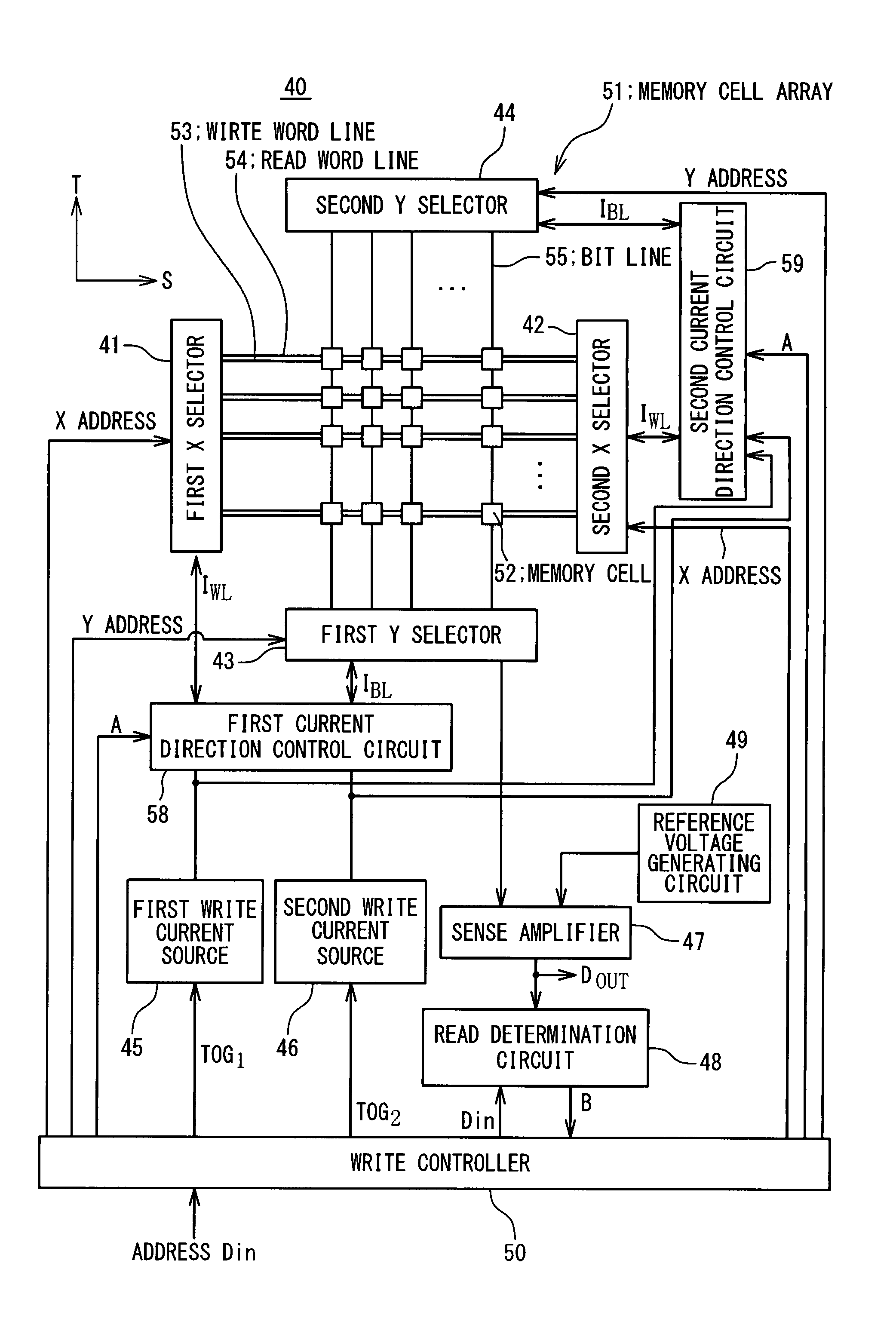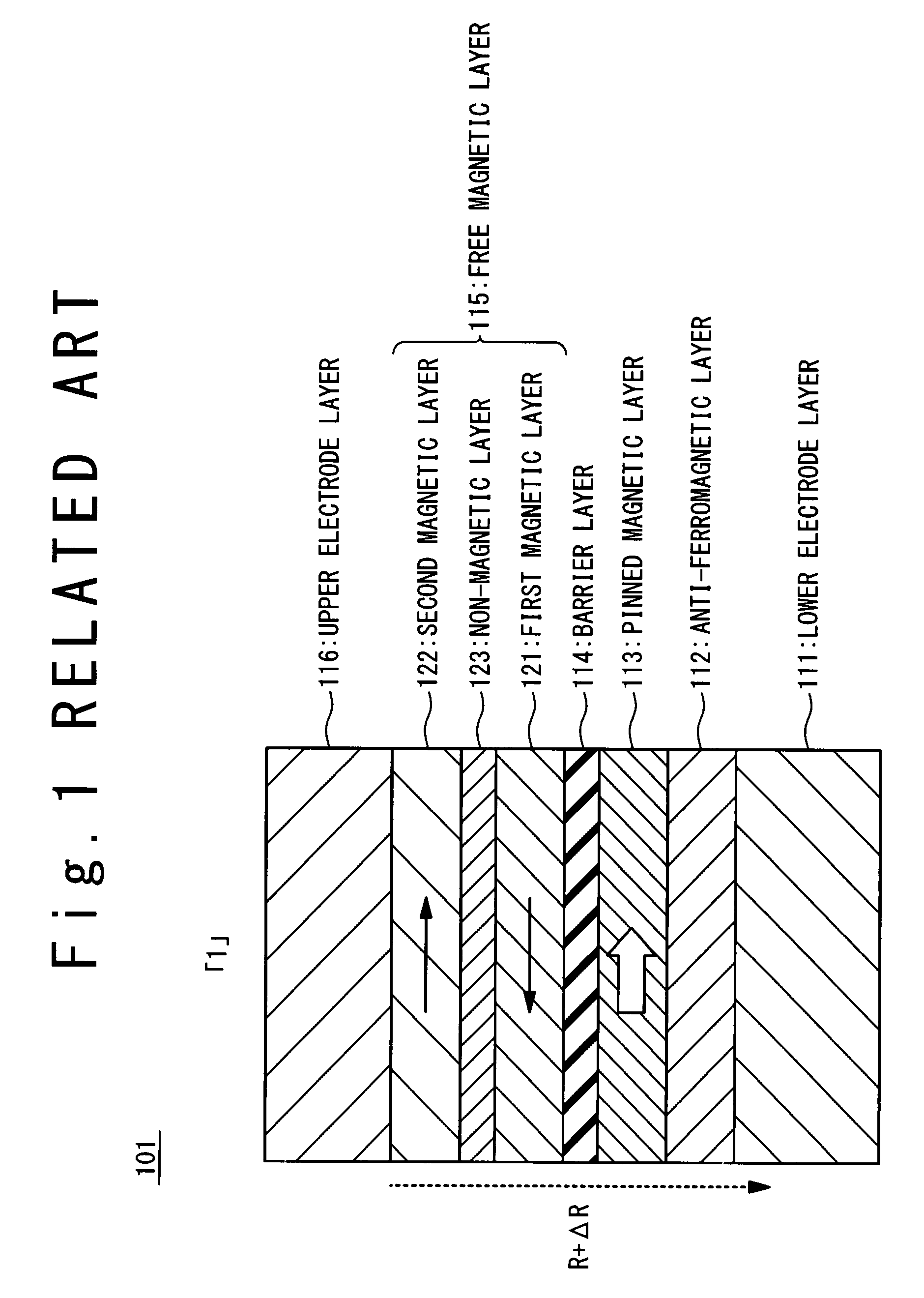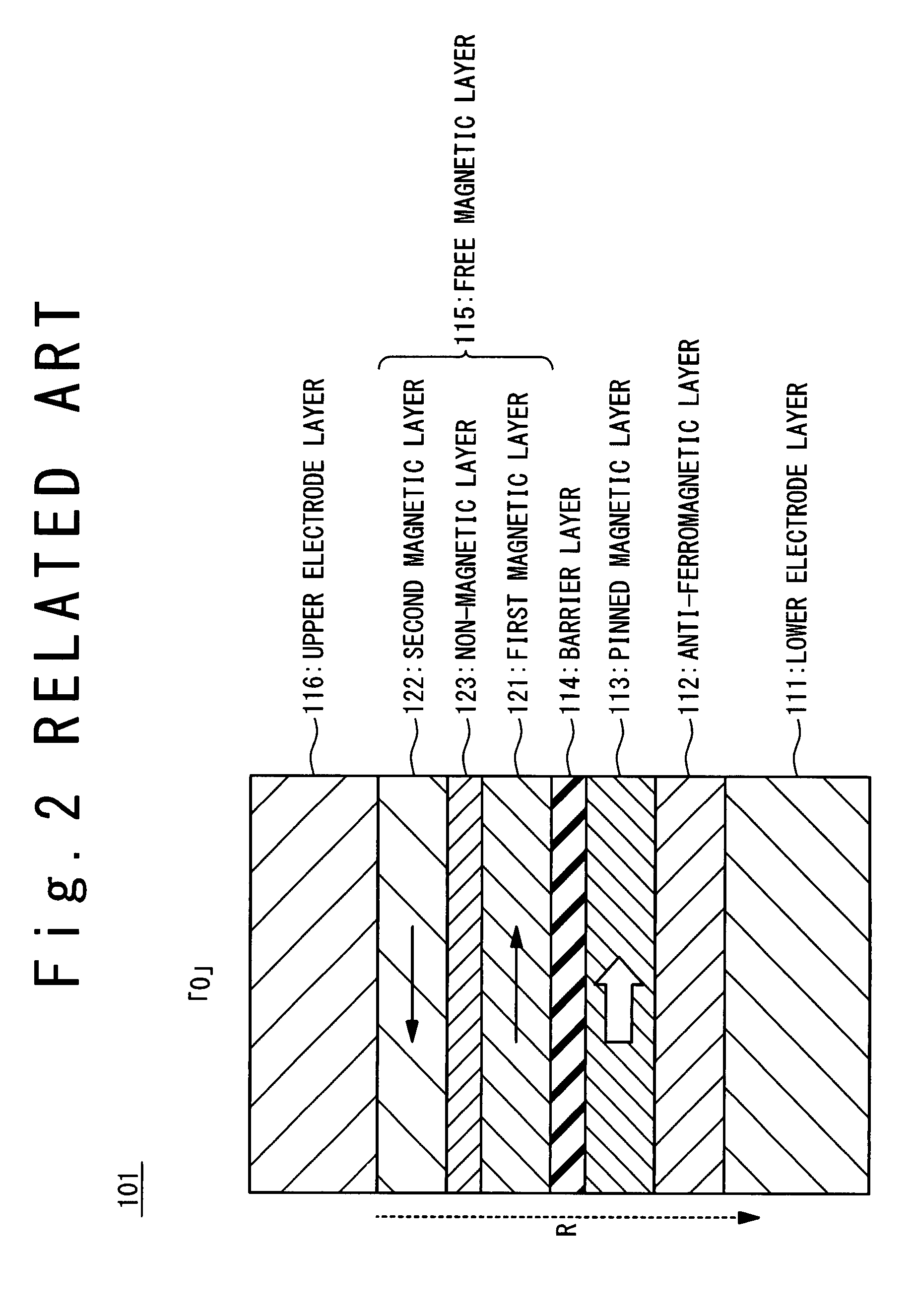Magnetic random access memory
a random access and magnetic technology, applied in the field of magnetic random access memory, can solve the problems of operation instability and the possibility of write disturbance, and achieve the effect of enlarger the write operation region and suppressing the disturban
- Summary
- Abstract
- Description
- Claims
- Application Information
AI Technical Summary
Benefits of technology
Problems solved by technology
Method used
Image
Examples
first example
[0161]FIG. 23 is a sectional view showing a magnetic resistance element having a structure A. This magnetic resistance element contains a seed layer 17, an anti-ferromagnetic layer 12, a fixed magnetic layer 13, a barrier layer 14, a free magnetic layer 15 and a cap layer 18, which are laminated in turn on the substrate. The seed layer 17 is a Ta film having the film thickness of 20 nm. The anti-ferromagnetic layer 12 is a PtMn film having the film thickness of 20 nm. The fixed magnetic layer 13 is composed of a CoFe film having the film thickness of 2.5 nm, a Ru film having the film thickness of 0.88 nm and a CoFe film having the film thickness of 2.5 nm. The barrier layer 14 is a film in which an Al film having the film thickness of 1 nm is oxidized. The free magnetic layer 15 has the magnetic films of alternately laminated two layers and one non-magnetic film. The first magnetic film 21-1 is composed of a NiFe film having the film thickness of 4 nm and a CoFe film having the film...
second example
[0170]FIG. 27 is a sectional view showing the magnetic resistance element having the structure B. This magnetic resistance element contains a seed layer 17, an anti-ferromagnetic layer 12, a fixed magnetic layer 13, a barrier layer 14, a free magnetic layer 15 and a cap layer 18, which are laminated in turn on the substrate. The seed layer 17 is a Ta film having the film thickness of 20 nm. The anti-ferromagnetic layer 12 is a PtMn film having the film thickness of 20 nm. The fixed magnetic layer 13 is composed of a CoFe film having the film thickness of 2.5 nm, a Ru film having the film thickness of 0.88 nm and a CoFe film having the film thickness of 2.5 nm. The barrier layer 14 is a film in which an Al film having the film thickness of 1 nm is oxidized. The free magnetic layer 15 has the magnetic films of the alternately laminated two layers and the non-magnetic film. The first magnetic film 21-1 is composed of a Co75Fe25 film having the film thickness of 2 nm and a CoFeB film ha...
third example
[0179]FIG. 31 is a sectional view showing the magnetic resistance element having the structure C. This magnetic resistance element contains a seed layer 17, a anti-ferromagnetic layer 12, a fixed magnetic layer 13, a barrier layer 14, a free magnetic layer 15 and a cap layer 18, which are laminated in turn on the substrate. The seed layer 17 is a Ta film having the film thickness of 20 nm. The anti-ferromagnetic layer 12 is a PtMn film having the film thickness of 20 nm. The fixed magnetic layer 13 is composed of a CoFe film having the film thickness of 2.5 nm, a Ru film having the film thickness of 0.88 nm and a CoFe film having the film thickness of 2.5 nm. The barrier layer 14 is a film in which an Al film having the film thickness of 1 nm is oxidized. The free magnetic layer 15 has magnetic films of the alternately laminated two layers and the non-magnetic film. The first magnetic film 21-1 is composed of a CoFeB film having the film thickness of 3.1 nm and a CoFe film having th...
PUM
 Login to View More
Login to View More Abstract
Description
Claims
Application Information
 Login to View More
Login to View More - R&D
- Intellectual Property
- Life Sciences
- Materials
- Tech Scout
- Unparalleled Data Quality
- Higher Quality Content
- 60% Fewer Hallucinations
Browse by: Latest US Patents, China's latest patents, Technical Efficacy Thesaurus, Application Domain, Technology Topic, Popular Technical Reports.
© 2025 PatSnap. All rights reserved.Legal|Privacy policy|Modern Slavery Act Transparency Statement|Sitemap|About US| Contact US: help@patsnap.com



